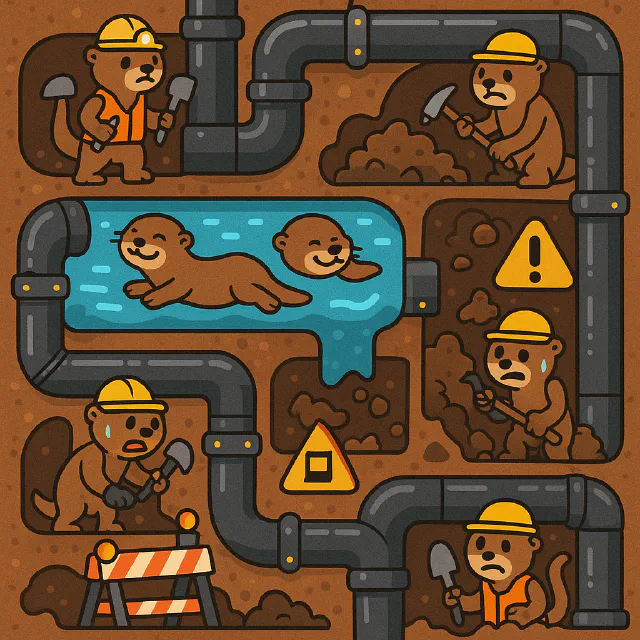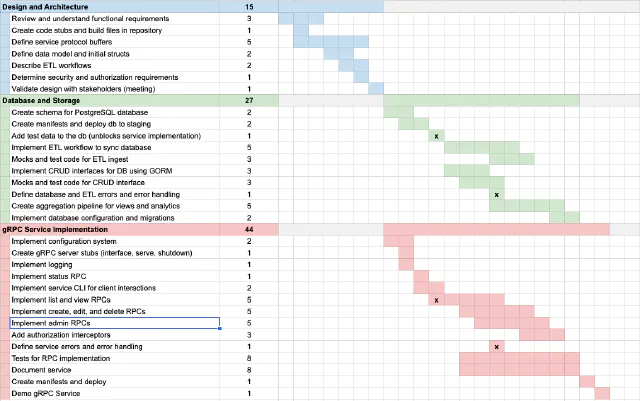If you think farmwork and software don’t have much in common, think again!
It’s 2pm CST. After making steady progress toward the goal all day, we suddenly hit a snag. No time to dwell in disappointment. Instead, we change tack and use the rest of the afternoon to chart a new path forward.
The scenario above could apply equally to a day spent gathering cattle off of grass, or coordinating my human coworkers at Rotational Labs as we work toward the launch of our flagship product, Ensign. There’s a surprising degree of overlap when it comes to project management, which I’ve been doing for 18 months for Rotational Lab’s fully distributed team, and ranching, which I have been doing for almost two decades on the Great Plains.
I understand from my more tech-savvy coworkers that there’s a saying in cloud engineering that we should think of the pieces of our apps “like cattle, not pets.” This was a funny idea to me the first time I heard it — the cattle on our farm are certainly not pets, but that doesn’t mean they’re all the same to us. Each one has a personality and plays a unique role — if anything, they’re more akin to coworkers.
In any case, here are 4 things that I’ve found translate pretty well between managing a herd of cattle and team of engineers:
Facilitate–don’t manage.
One of my favorite aspects of project management is servant leadership; emphasizing the wellbeing of those you are serving.
You can’t order a cow to give birth, and it’s a safe bet that two-ton bull will jump into the trailer easier if you make it seem like his idea. In the same way, I don’t order my coworkers to code.
The funny thing about project management is that good PMs don’t try too hard to manage people. Just as a rancher facilitates the processes within a cow/calf operation such as calving, herd health, breeding, and feeding, project managers guide processes while removing obstacles, create a shared understanding of work, and promote growth among team members. PMs and cattlemen alike must always keep in mind the big picture, while recognizing that every individual matters, whether that be cattle or engineers.
My motto hasn’t changed: ABR - Always Be Repeating.
A PM’s job is to relentlessly repeat information. Their superpower is to do so in a super motivating way.
You can send a border collie on an outrun to gather stock, and support them with repeated guidance as needed, but you have to give them the space to achieve the task they were asked to perform using their own knowledge and instinct.
I often think about that at the start of a new sprint with the engineering team. There is a plan in place, but the path forward will look a bit different for everyone. A PM and a herdsman set boundaries so that engineers (or stockdogs) can operate within those boundaries while we (the PM or herdsman) disappear into the background, offering support and reminders as needed — and always remembering to celebrate the wins.
EQ matters equally in both endeavors.
Emotional intelligence and the ability to be still will serve any PM or rancher well.
When present and focused, a rider becomes aware of slight changes within their horse, and a cow’s next move can be anticipated before it’s made.
Remember to listen more than you speak, practice an attitude of empathy, and maintain an awareness of things not communicated through speech. A PM can function as a sounding board for others. No commentary required.
Rotational Labs is basically a bunch of cowhands.*
(*this is a compliment 😉)
My favorite discovery, and one that I didn’t consider or anticipate when starting my career in project management, is the similarity between western culture and the culture of collaboration and respect in a strong engineering team. Farmwork and engineering are both really hard, and it can be lonesome to try to go at either alone.
A willingness to work, the ability to learn from failures, and enthusiasm for excellence are shared traits between both the cowherds and the computer engineers I work with daily.
I suppose Rotational may be a bit unique; we’re a team that puts a lot of value on having a mixture of backgrounds and life experiences (as you can probably tell from reading this) — we look for people who broaden and enrich the team, rather than limiting ourselves to looking for people who “fit”.
So, strange as it may seem, I feel just about at home in the world of technology development as I do out here on the range.
Photo by Amaury Laporte on Flickr Commons











